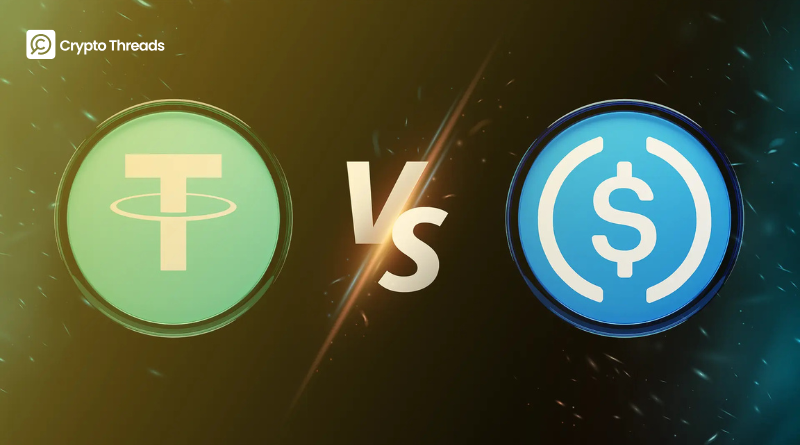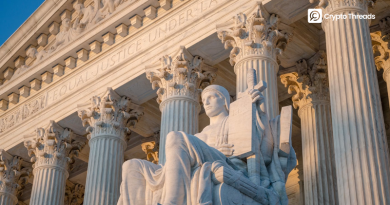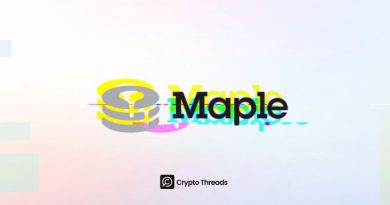USDT vs USDC: A Clash in the World of Stablecoins
Strategy, Economic Models, and Legal Implications of the Two Largest Stablecoins
Overview: Same Dollar, Different Ideologies
USDT (Tether) and USDC (USD Coin) have become the two core stablecoins in the crypto ecosystem. While both aim to maintain a 1:1 peg with the US dollar, they embody two completely different philosophies and directions. Launched in 2014, Tether took advantage of its first-mover status to establish itself as the largest digital dollar with a market cap of over $120B by the end of 2024. Just six months later, by July 2025, USDT reached a record market cap of $160B—up 33%.
Circle entered the race later; the company launched USDC in 2018 and quickly earned a reputation for transparency, strict compliance, and strong ties with major financial partners like BlackRock, Visa, Fidelity, and Goldman Sachs. According to Chainalysis (2024), USDC, though only one-third the size of USDT in market cap, accounts for 70% of stablecoin volume in North America and Europe—especially in payments, OTC transactions, and TradFi integrations. USDT represents the crypto-native side of DeFi and emerging markets, while USDC reflects the compliance-native ethos and TradFi integration.
| Category | USDC | USDT |
| Creator | Centre Consortium (by Circle) | Tether Limited |
| Year Established | 2018 | 2014 |
| Price Peg | 1 USDC : 1 USD | 1 USDT : 1 USD |
| Market Cap (May ‘22) | $49.4 Billion | $79.4 Billion |
| Backing | 100% cash & cash equivalents | 1:1 by liquid debt assets, treasuries, and some cash |
| Audit Frequency | Monthly | Irregular |
| Price Risk / Risk of Losing 1:1 Peg | Zero as it’s 100% redeemable due to its always liquid type of backing. | “Non-zero price risk, but generally it has very close to 1:1 because of its reserve model” (but limited to liquid assets in short term). Reference: USDT has stayed within a few % of $1 during the USDT-LUNA crash, and it’s rumored that $1B+ is successfully redeemed. |
| Regulatory Status | This type of stablecoins (100% redeemable) is what current drafts of regulation (especially US) are looking to license. They are treated as e-money in many jurisdictions, such as the UK. | Unclear |
| Accounting | Reliable asset due to zero price risk, regulatory status and transparent audit reports. | Not reliable due to price risk, opaque backing and unclear regulatory status. |
Strategic Development: Divergent Philosophies
Tether positions USDT as a “permissionless digital dollar,” bypassing banking systems, traditional payment rails, and capital controls. In countries like Turkey, Lebanon, Venezuela, and Argentina, USDT has become the de facto currency for personal, business, and cross-border transactions. As of mid-2025, USDT on Tron surpassed Ethereum with over $80B, accounting for 50% of total supply. Daily trading volume ranges from $150B to $190B, outpacing even Bitcoin and Ethereum.
Tether’s strategy is to dominate markets before regulations solidify, then gradually comply country by country. In 2024, CEO Paolo Ardoino announced the “Tether US Regulated Stablecoin” to comply with the STABLE Act and MiCA, while continuing to maintain a decentralized version of USDT for global markets.
Circle took the opposite route. From inception, transparency, trusted partners, and compliance were strategic cornerstones. The Circle Reserve Fund (co-managed with BlackRock) holds 85% of reserves, with the rest at BNY Mellon, Customers Bank, and (formerly) Signature. Monthly reserve reports are detailed and independently audited.
When Silicon Valley Bank collapsed, Circle was the only stablecoin issuer to immediately disclose its $3.3B exposure, activate a backstop, and restore its peg within 48 hours. The strategy peaked when Circle IPO‘d on the NYSE at the end of 2024, valued at $15B with backing from Goldman Sachs, BlackRock, and Fidelity. Circle’s stock (CRCL) now trades at $223.78 with a market cap of $49.8B, peaking at $262.8.
Expansion Strategy: Dominance vs Geographic Differentiation
USDT and USDC also diverge in geographic strategy. Tether aims for “digital dollarization” by replacing weak local currencies in unstable economies. Beyond issuing stablecoins, Tether is building an entire parallel financial ecosystem—Tether Wallet, P2P platforms, and even investing in AI and renewable energy infrastructure in El Salvador. Tether has invested in Crystal Intelligence to enhance blockchain surveillance, freezing over $2.7B USDT tied to crime, and cooperating with 255 law enforcement agencies.
This approach has yielded astonishing results. In Argentina, USDT is an unofficial reserve currency, accounting for 23% of FX volume. In Nigeria, it accounts for over 40% of crypto transactions and is used for salaries and savings. Tether isn’t just providing a stablecoin—it’s offering complete financial infrastructure for the underbanked.
Circle focuses on “embedding” USDC into existing financial systems rather than replacing them. Partnering with Visa, Mastercard, and SWIFT, Circle is making USDC a digital payment rail for banks and corporations without requiring infrastructure changes. For example, Visa B2B Connect enables cross-border payments via USDC at 70% lower cost than traditional SWIFT. USDC has expanded from 8 to 23 blockchains, with support from Algorand, Aptos, Arbitrum, Avalanche, Base, and more.
Economic Models: Stablecoin or Investment Fund?
Both USDT and USDC operate by receiving USD, issuing 1:1 tokens, and investing reserves to earn yield. However, their investment approaches differ sharply.
Tether follows a flexible, high-yield strategy: 75.85% in T-bills, 6.15% cash, 5.27% secured loans, and 12.73% in corporate bonds and alternatives. Nearly 19% is in non-traditional assets. As of July 2025, Tether held $8B in gold (80 tons) stored in Switzerland, up from $7.7B at end-2024. T-bill reserves reached $100B.
Q3 2024 reports showed $2.5B in net profit, mainly from T-bills, Bitcoin, and gold (up 60% and 15% YTD, respectively). While Bank of America reported $6.7B in profit for all of 2024, Tether generated revenue on par with a top-5 US bank—with just one stablecoin. If rates remain high, Tether’s revenue could exceed $10B in 2025.
Circle avoids systemic risk. Its reserves are only in BlackRock’s short-term fund (USDXX) and cash. All assets are AAA-rated and mature in under 90 days. Circle earned $1.6B in 2024, 98% from reserve interest. Coinbase receives 50% of the yield (~$940M), shrinking Circle’s profit margin. A 25bps Fed rate cut immediately reduced Circle’s income by $30M.
However, Circle is diversifying revenue: APIs, cross-chain protocols, regional stablecoins (EURC), and cost optimization via Coinbase. Non-interest income rose 45% YoY in 2024.
Deeper Economic Insight: Tether as a “Shadow Central Bank”
By end-2024, with $120B in reserves, Tether held 5.8% of US short-term T-bills—equal to Ukraine’s GDP. By 2025, with $160B in assets, that share may reach 7–8%, making Tether one of the US government’s largest creditors—larger than many countries.
This creates a “monetary multiplier” effect. Every dollar sent to Tether creates not just 1 USDT, but 10–15x liquidity via DeFi protocols. Unlike the Fed, which must weigh inflation risks when printing money, Tether can generate dollar liquidity without impacting US M2 supply.
Tether exploits the arbitrage between Fed policy rates (5.25–5.5%) and money market rates (4.8–5.2%). With $90B in T-bills, Tether earns $4.3–4.7B in annual interest—more than 80% of US commercial banks. This asymmetric yield isn’t shared with users, creating immense profit.
Risk Strategy: Contrasting Approaches
Circle runs a 100% full-reserve model with zero market risk. Tether uses a diversified approach—18% in assets like gold, Bitcoin, secured loans, and corporate bonds. It’s risky but savvy in times of inflation and dollar devaluation.
In 2024, gold and Bitcoin holdings gained 76%, adding $4.8B in unrealized profits. Factoring capital gains, Tether’s income could exceed $7–8B, outperforming JPMorgan on an asset-adjusted basis. This transforms Tether into a private sovereign wealth fund.
However, risks remain: a 30% crash in gold and BTC would wipe out $3.8B (3.2% of reserves). Circle, meanwhile, is immune to market crashes but vulnerable to rate cuts.
Legal Framework: Stablecoins Enter Regulation
The biggest change from 2024–2025 is regulatory, not technical. Laws like the STABLE Act (US), MiCA (EU), and rules in Singapore, Korea, and Japan have pushed stablecoins from legal gray areas into formal, licensed territory. In 2025, the GENIUS Act passed in the US (68–30 vote), replacing the STABLE Act and mandating third-party audits and 100% reserve backing.
GENIUS allows more issuer types (including non-banks under $10B). MiCA goes further—mandating transparency, caps on non-euro stablecoins (max €200M/day), and issuance limits.
Circle leads in compliance. It registered in Ireland, fully adheres to MiCA, and completed GENIUS Act compliance—serving as a model issuer. It also signed partnerships with Société Générale and Deutsche Bank, and is testing USDC in Singapore via MAS.
Tether takes a dispersed, emerging-market focus. While it claims to support clear regulation, most USDT is issued from entities in BVI, Hong Kong, and UAE. After Binance limited USDT in Europe, analysts see Tether as being “marginalized” in strict jurisdictions. It’s now developing a compliant US-only stablecoin, signaling a strategic pivot.
Legal Strategy: Regulatory Arbitrage vs Capture
Tether uses regulatory arbitrage—leveraging legal differences to maximize profit and reduce constraints. It’s flexible and fast, but comes with reputational and legal risks.
Circle pursues regulatory capture—actively shaping laws to favor its model. It spent over $12M on lobbying in 2024 (up 300% YoY), and joined advisory boards at the Fed, ECB, and Bank of England. This created a “regulatory moat” against competitors.
This paid off. The GENIUS Act mirrors Circle’s reserve, reporting, and audit practices—giving Circle a cost advantage over newcomers.
Macro Impact & Long-Term Vision
Stablecoins are becoming pillars of emerging global finance. BIS (2025) reports they account for 11%+ of cross-border volume in emerging markets and 60%+ of DeFi TVL. Their growing role in trade is forcing central banks to rethink their role as monetary intermediaries.
Tether is betting on stablecoins as “synthetic dollar reserves” in inflation-ridden or unbanked nations. Integration into payments, wallets, and remittances has turned USDT into a parallel banking system in Latin America, the Middle East, and Africa.
Circle, meanwhile, is building USDC into a financial internet layer—bridging blockchain and traditional finance. It’s piloting Cross-Chain Transfer Protocol (CCTP), integrating with SWIFT, Visa B2B, RTGS (UK), and FedNow (US)—strategic moves to make USDC the default stablecoin for global payment rails.
The Network Effect War: Tether’s Dominance
Despite Circle’s lead in compliance and partnerships, Tether dominates in network effects. With 50M+ active addresses across 15+ blockchains, USDT is the crypto lingua franca. Every exchange, protocol, and app integrates USDT first due to user familiarity.
This creates massive switching costs. Moving to USDC involves fees, slippage, and liquidity hurdles. Tether capitalizes by expanding to new blockchains—Ethereum, Tron, Polygon, Arbitrum, Optimism, and more.
Circle has opted for quality over quantity. Initially on 8 chains, USDC now spans 23—with deeper institutional integrations.
Future Outlook: Coexistence or Dominance?
Messari (2025) data shows USDC has 2M+ monthly active institutional addresses (DAOs, Web3 firms, payment providers), while USDT has over 50M individuals and P2P users. This reflects a dual role: decentralized utility vs. regulated digital payments.
USDT is likely to remain dominant in emerging markets, DeFi, and P2P. USDC will be the preferred option for banks, institutions, and regulated apps.
However, the rise of CBDCs and tighter laws may shift this balance. If the Fed launches a Digital Dollar, both stablecoins must reposition. Circle’s compliance edge may prove decisive, while Tether’s network effects could erode under regulatory pressure.
Conclusion
The USDT vs. USDC rivalry is more than a market share battle—it’s a fundamental divergence in monetary philosophy for a post-banking era. As stablecoins transition from DeFi to policy, regulation, and global trade, their fate will shape the digital dollar’s future.
USDT stands for accessibility and emerging-market empowerment. USDC champions transparency, legality, and deep TradFi integration. Together, they anchor a new class of currency influencing digital economies, monetary policy, and global finance.
Their success depends on adapting to evolving regulation and the diverse demands of a dynamic market. With the GENIUS Act in the US and MiCA in the EU, the path to sustainable growth is clearer. In this race, there may be no single winner—each will carve its place in a complex, multi-dimensional digital currency landscape.



